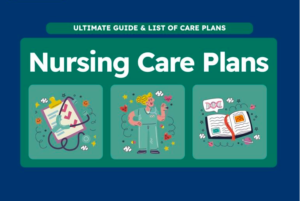Hypertensive retinopathy is a potentially vision-threatening condition that occurs when chronic high blood pressure damages the blood vessels in the retina. As the eyes are particularly sensitive to blood pressure changes, uncontrolled hypertension can lead to irreversible vision problems, even blindness, if left untreated. For both medical professionals and hypertensive patients, recognizing the early signs and symptoms of hypertensive retinopathy is critical for preventing severe complications.
In this article, we’ll explore seven alarming hypertensive retinopathy signs and symptoms that no one should ignore. By understanding these warning signs, patients can seek timely care, and healthcare providers can better monitor and treat individuals at risk.
1. Blurred Vision: A Common Early Warning Sign
Blurred vision is often one of the first symptoms hypertensive patients may notice. This occurs when elevated blood pressure causes damage to the delicate blood vessels in the retina, reducing the retina’s ability to focus images sharply. In hypertensive retinopathy, the blood vessels may leak or become obstructed, leading to fluid buildup and impairing visual clarity.
For medical professionals, it is important to note that this symptom may be intermittent at first, only becoming more consistent as the disease progresses. Regular eye exams are crucial for detecting early retinal changes in hypertensive patients, even when they report only occasional blurred vision.
2. Retinal Hemorrhages: Blood Spots in the Eye
Retinal hemorrhages, which appear as small blood spots in the retina, are a direct result of uncontrolled blood pressure damaging the blood vessels. These hemorrhages are sometimes detected during routine eye exams before the patient even notices visual disturbances. In severe cases, retinal hemorrhages may lead to more significant vision loss if not treated promptly.
There are different types of retinal hemorrhages, including flame-shaped and dot-blot hemorrhages, each indicating different levels of vascular damage. For hypertensive patients, especially those with prolonged high blood pressure, these hemorrhages are a red flag of advancing retinopathy and require immediate attention.
3. Cotton Wool Spots: Nerve Fiber Damage in the Retina
Cotton wool spots are small, white patches on the retina that indicate damage to the nerve fibers. These spots result from microinfarctions, where the small blood vessels in the retina become blocked due to high blood pressure. As the nerve fibers in the retina lose their blood supply, they swell and appear as cotton wool spots during a retinal examination.
For hypertensive patients, the presence of cotton wool spots is concerning because it signifies ongoing damage to the retinal nerves. Medical professionals should carefully monitor these patients and adjust their treatment plan to control blood pressure and prevent further retinal damage.
4. Papilledema: Swelling of the Optic Nerve
Papilledema, the swelling of the optic nerve, is one of the most severe signs of hypertensive retinopathy. This condition occurs when elevated intracranial pressure, often due to malignant hypertension, causes the optic nerve head to swell. Papilledema can lead to permanent vision loss if left untreated, making it a medical emergency.
Patients with papilledema may report symptoms such as severe headaches, nausea, and transient episodes of vision loss. For healthcare providers, recognizing papilledema during an eye exam is critical. Immediate intervention to lower blood pressure and reduce intracranial pressure can prevent permanent optic nerve damage.
5. Narrowing or Obstruction of Retinal Blood Vessels
One of the most common findings in hypertensive retinopathy is the narrowing or obstruction of the retinal blood vessels. This vascular narrowing, known as arteriolar sclerosis, is a response to long-term high blood pressure. Over time, the retinal arteries become thickened and less flexible, reducing blood flow to the retina.
For patients, the impact of reduced retinal blood flow may not be noticeable until significant damage has occurred. However, healthcare professionals can detect these changes during a fundoscopic exam, where the retinal arteries appear narrowed and may even show signs of “copper wiring.” Detecting arteriolar sclerosis early is essential for preventing further vascular damage and vision loss.
6. Floaters and Flashing Lights: Warning of Retinal Damage
Patients with hypertensive retinopathy may report seeing floaters (tiny specks that drift through their field of vision) or flashing lights. These symptoms can indicate that the retina is being damaged by high blood pressure, particularly when retinal blood vessels are leaking or when the vitreous gel inside the eye begins to pull on the retina.
For medical professionals, these symptoms should raise concern about potential retinal detachment or hemorrhage, both of which require urgent intervention. Patients should be advised to seek immediate medical attention if they experience sudden onset of floaters or flashes, as these can be warning signs of serious retinal damage.
7. Sudden, Severe Vision Loss: An Emergency Symptom
Sudden and severe vision loss is one of the most alarming symptoms of hypertensive retinopathy, often indicating advanced disease or a serious complication, such as central retinal vein occlusion (CRVO) or retinal detachment. CRVO occurs when a major retinal vein becomes blocked, leading to sudden vision loss and swelling in the retina. Retinal detachment, another possible consequence of hypertensive retinopathy, occurs when the retina pulls away from the underlying tissue.
For patients experiencing sudden vision loss, this is a medical emergency. Immediate treatment can prevent permanent blindness, but the prognosis depends on how quickly intervention is provided. Ophthalmologists and healthcare providers must act swiftly to diagnose the cause and initiate treatment.
Causes and Risk Factors for Hypertensive Retinopathy
Hypertensive retinopathy is most commonly seen in individuals with poorly controlled high blood pressure. Risk factors include long-term hypertension, smoking, diabetes, and advanced age. Patients with these risk factors should undergo regular eye exams to catch signs of retinopathy early.
For healthcare providers, managing hypertensive retinopathy involves not only treating the eye condition but also addressing the underlying hypertension to prevent further complications.
Diagnostic Tools for Hypertensive Retinopathy
Ophthalmologists and optometrists use several diagnostic tools to detect hypertensive retinopathy. These include:
- Ophthalmoscopy: A detailed examination of the retina.
- Fundus Photography: A specialized camera that captures detailed images of the retina.
- Optical Coherence Tomography (OCT): An advanced imaging technique that provides cross-sectional views of the retina.
These tools allow medical professionals to assess the severity of retinopathy and tailor the treatment plan accordingly.
Treatment Options for Hypertensive Retinopathy
The primary treatment for hypertensive retinopathy is controlling the patient’s blood pressure. Antihypertensive medications, along with lifestyle changes such as a healthy diet and regular exercise, can help reduce the risk of further retinal damage. In severe cases, where retinal hemorrhages or detachment occur, laser treatments or surgery may be necessary to preserve vision.
Preventing Hypertensive Retinopathy: Tips for Patients
For hypertensive patients, prevention is key. Regular blood pressure monitoring, a healthy lifestyle, and annual eye exams can go a long way in reducing the risk of hypertensive retinopathy. Patients should work closely with their healthcare providers to keep their blood pressure under control and avoid complications.
When to See an Ophthalmologist: Red Flags to Watch Out For
Patients experiencing symptoms such as blurred vision, floaters, flashes of light, or sudden vision loss should see an ophthalmologist immediately. These symptoms could indicate serious retinal damage and require prompt intervention.
FAQs About Hypertensive Retinopathy
1. What are the first signs of hypertensive retinopathy? The early signs of hypertensive retinopathy often include blurred vision and occasional headaches. Some patients may not experience any symptoms initially, which is why regular eye exams are essential, especially for individuals with chronic high blood pressure.
2. Can hypertensive retinopathy be reversed? In its early stages, hypertensive retinopathy can be managed and the progression slowed by controlling blood pressure. However, if retinal damage is severe, the effects may be permanent. Prompt treatment and blood pressure management are key to preventing long-term vision loss.
3. How is hypertensive retinopathy diagnosed? Hypertensive retinopathy is diagnosed through a comprehensive eye exam, where the doctor will examine the retina using an ophthalmoscope. Additional imaging tools such as fundus photography and optical coherence tomography (OCT) may also be used to assess retinal damage.
4. What happens if hypertensive retinopathy is left untreated? If left untreated, hypertensive retinopathy can lead to severe complications, including retinal hemorrhages, retinal detachment, and even permanent blindness. It is essential to manage high blood pressure and undergo regular eye exams to prevent these outcomes.
5. Can lifestyle changes help prevent hypertensive retinopathy? Yes, adopting a healthy lifestyle can significantly reduce the risk of developing hypertensive retinopathy. Maintaining a balanced diet, exercising regularly, quitting smoking, and controlling blood pressure with medications (if prescribed) are all important steps in prevention.
6. How fast does hypertensive retinopathy progress? The progression of hypertensive retinopathy depends on how well the patient’s blood pressure is controlled. In patients with uncontrolled or malignant hypertension, the condition can progress rapidly, leading to severe retinal damage within months. For those with well-managed hypertension, progression can be slow and asymptomatic for years.
7. Is hypertensive retinopathy painful? Hypertensive retinopathy itself is not typically associated with pain. However, symptoms like blurred vision, headaches, or floaters may cause discomfort or concern. The lack of pain is why routine eye exams are crucial—patients often don’t realize damage is occurring until vision loss becomes noticeable.
8. Can hypertensive retinopathy occur without other symptoms of hypertension? Yes, hypertensive retinopathy can sometimes be the first indicator of uncontrolled high blood pressure, especially in individuals who are asymptomatic. This is why eye exams can play a critical role in early detection and may reveal systemic hypertension before other symptoms develop.
9. Who is at the highest risk for hypertensive retinopathy? Patients with long-standing, uncontrolled hypertension, especially those who smoke, have diabetes, or are older, are at higher risk for hypertensive retinopathy. People who experience sudden, extremely high blood pressure (malignant hypertension) are also at risk for rapid development of the condition.
10. How can hypertensive retinopathy be prevented? The best prevention for hypertensive retinopathy is controlling blood pressure through medications, lifestyle changes, and regular monitoring. This includes adopting a heart-healthy diet, exercising regularly, reducing salt intake, and avoiding smoking. Routine eye exams are essential for early detection and intervention.
Key Insights and Trends:
| Topic | Insight |
|---|---|
| Prevalence | Hypertensive retinopathy is common in people with long-standing, poorly controlled hypertension. |
| Diagnostic Trends | Advanced imaging technologies like OCT and fundus photography are increasingly used to detect early signs of retinopathy. |
| Prevention | Routine eye exams for hypertensive patients have become standard practice to catch retinopathy early. |
| Treatment Innovations | Laser therapies and targeted interventions are improving outcomes for patients with severe retinal damage. |
| Patient Awareness | There is a growing emphasis on educating hypertensive patients about the importance of eye health. |
Conclusion
Hypertensive retinopathy is a serious condition that can lead to permanent vision loss if left untreated. By recognizing early signs—such as blurred vision, retinal hemorrhages, and cotton wool spots—patients and healthcare professionals can intervene early and prevent further damage. For hypertensive patients, regular eye exams and effective blood pressure management are key to protecting your eyes and overall health. By staying proactive, you can take charge of your vision and prevent irreversible complications.
If you found this article helpful, or if you have questions about hypertensive retinopathy, leave a comment below. And don’t forget to share this post with others who might benefit from this vital information.
Call-to-Action
If you or a loved one has high blood pressure, don’t wait—schedule a comprehensive eye exam today to detect any early signs of hypertensive retinopathy. Early detection can save your sight and improve your quality of life.




